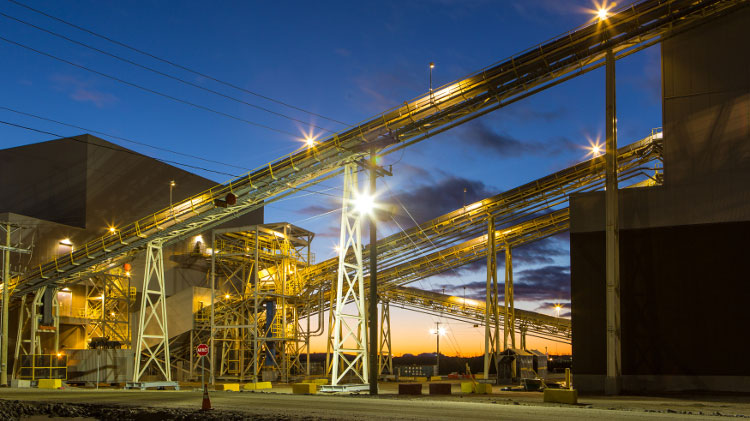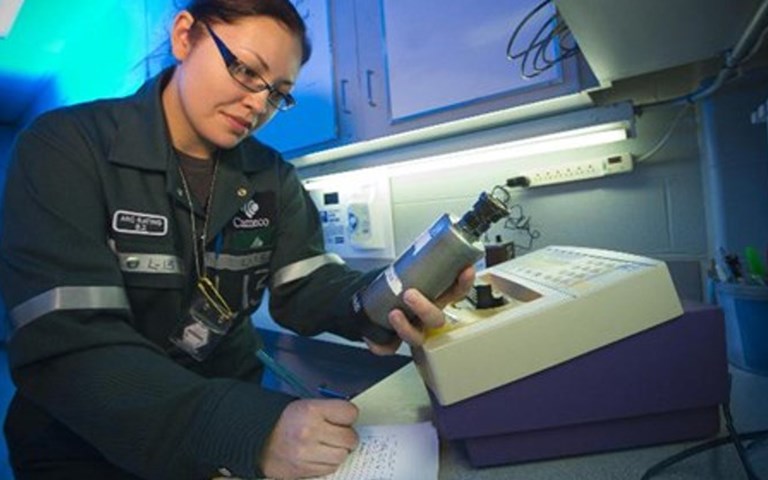Cameco has recently backed off of production targets for 2018 | Courtesy of Cameco
It has been a rough few years for the mining industry overall, but one commodity has been hit harder than most, and due to different circumstances. Uranium prices – alongside companies that explore, develop and produce the ingredient used to fuel nuclear power reactors – have been pummelled as a result of the earthquake and tsunami that knocked out cooling systems at the Fukushima Daiichi nuclear power station in 2011. Explosions and radiation leaks ensued. It was the worst nuclear crisis since Chernobyl in 1986.
Japan shut down all of its reactors in the wake of the tragedy, as questions about safety put its entire nuclear program in doubt. Other countries with nuclear power plants also grew skeptical. Germany immediately closed eight reactors following Fukushima, vowing to abandon nuclear energy altogether.
For the market, the fallout happened almost overnight, and prices have yet to recover. In fact, the spot price of uranium has declined steadily over the past three years. The price of uranium fell from US$70 per pound just prior to the Fukushima disaster to around US$35 in later 2013 and early 2014.
Majors restrained but explorers see opportunity
“We knew it was going to be negative [after Fukushima], but we didn’t know how long it would last,” says Tim Gitzel, president and CEO of Saskatchewan-based Cameco Corp., the world’s largest publicly traded uranium company. “I think we underestimated that.”
While his long-term outlook is positive, in the near term Gitzel says the industry is “still in a bit of a foggy period.”
Cameco recently backed off of a 2018 production target of 36 million pounds per year set in late October 2012, which itself was cut from a previous target of 40 million pounds per year. The company has not set a new target, and produced 23.6 million pounds last year.
Other companies are also downsizing their production plans. For instance, Paladin Energy says it is suspending production at its Kayalakera mine in Malawi, citing depressed uranium prices since 2011.
Fission Uranium Corp. is concentrating efforts on finding the resource, working towards production when prices eventually recover. “We are trying to put as much money in the ground as we can to really explore our property,” says chairman and CEO Dev Randhawa. “We feel it’s not time to sell yet, when prices are at a seven-year low. Do you sell your house when real estate prices are at the bottom?”
Fission increased its winter drilling program by 150 per cent in 2013–14.
At Denison Mines Corp., president and CEO Ron Hochstein says the focus is also on exploration in the mineral-rich Athabasca Basin of Saskatchewan. “We are trying to increase shareholder value with the drill bit,” he says.
Will cooler heads prevail?
With the entire sector at the beck and call of uranium prices, all eyes are on a trend that may slowly be changing. The Japanese government has signaled an interest in rebuilding its nuclear program, including restarting its 48 reactors; the country’s cabinet approved a new Basic Energy Plan last month that includes nuclear power as a key part of its energy mix for the next 20 years.
That stance has been one of the hallmarks of the government of Prime Minister Shinzo Abe, which came into power in December 2012. The previous government had vowed to phase out atomic power plants across the country, which relied on nuclear-generated power for about 30 per cent of its power supply before March 2011.
“While the [Japanese] public remains divided on nuclear power, it seems clear that it will remain part of the mix,” David Talbot, an analyst at Dundee Capital Markets, wrote in a recent note to clients, calling Japan’s reactor restarts the “fundamental requirement for a rebound in uranium prices.”
But demand from Japan, while important, will not cure the sector’s woes completely, Talbot’s note points out: “It has more to do with psychology of the investor and the other 90 per cent of the world’s utilities that have been sitting on their hands and not contracting uranium over the past year.”
It will take time for reactors to come back online and for the market to adjust, but uranium companies are already seeing some confidence creeping back into the sector. Their long-suffering share prices started to move higher in recent weeks as analysts begin to bump up their price targets from multi-year lows.
Slow changes will drive growth
Much of the potential new production hinges on progress in Japan, but that is a slow process. Bank of America Merrill Lynch analyst Oscar Cabrera points out that Japan’s Nuclear Regulatory Agency is doing safety inspections on 17 of its 48 nuclear reactors. It has been 10 months since the first 12 applications to restart reactors were submitted to the agency, and that is just the first step, he wrote recently. Both the federal and local governments also need to give approval. Once that is done, the reactors can restart, which Cabrera says is a “key catalyst” for a boost in uranium prices.
Beyond Japan, though, there is hope as China, India, South Korea, and Russia have continued their aggressive build-out of nuclear power plants despite the Fukushima crisis. China in particular is looking at nuclear as a reliable source of clean energy amid a growing pollution problem. According to the World Nuclear Association, China has 20 nuclear power reactors in operation and 28 under construction with big plans to build more. While it still relies on foreign supplies of uranium to fuel its nuclear program, including a long-term deal it has with Cameco, China has a goal to be self-sufficient not just in nuclear power plant capacity, but also in the production of fuel for those plants.
India is also forging ahead with its own nuclear program with a goal to supply 25 per cent of its electricity from nuclear power by 2050 in order to meet the demand of its ballooning population.
It is that increase in demand from a number of countries that has producers like Cameco believing in better days ahead. Cameco is forecasting an increase in global nuclear plants from 433 today (representing 394 gigawatts) to 526 (or about 514 gigawatts) by 2023. Global demand, at about 170 million pounds, is already outpacing supply at about 160 million pounds. “The supply-demand fundamentals look very good for the industry,” says Gitzel.



